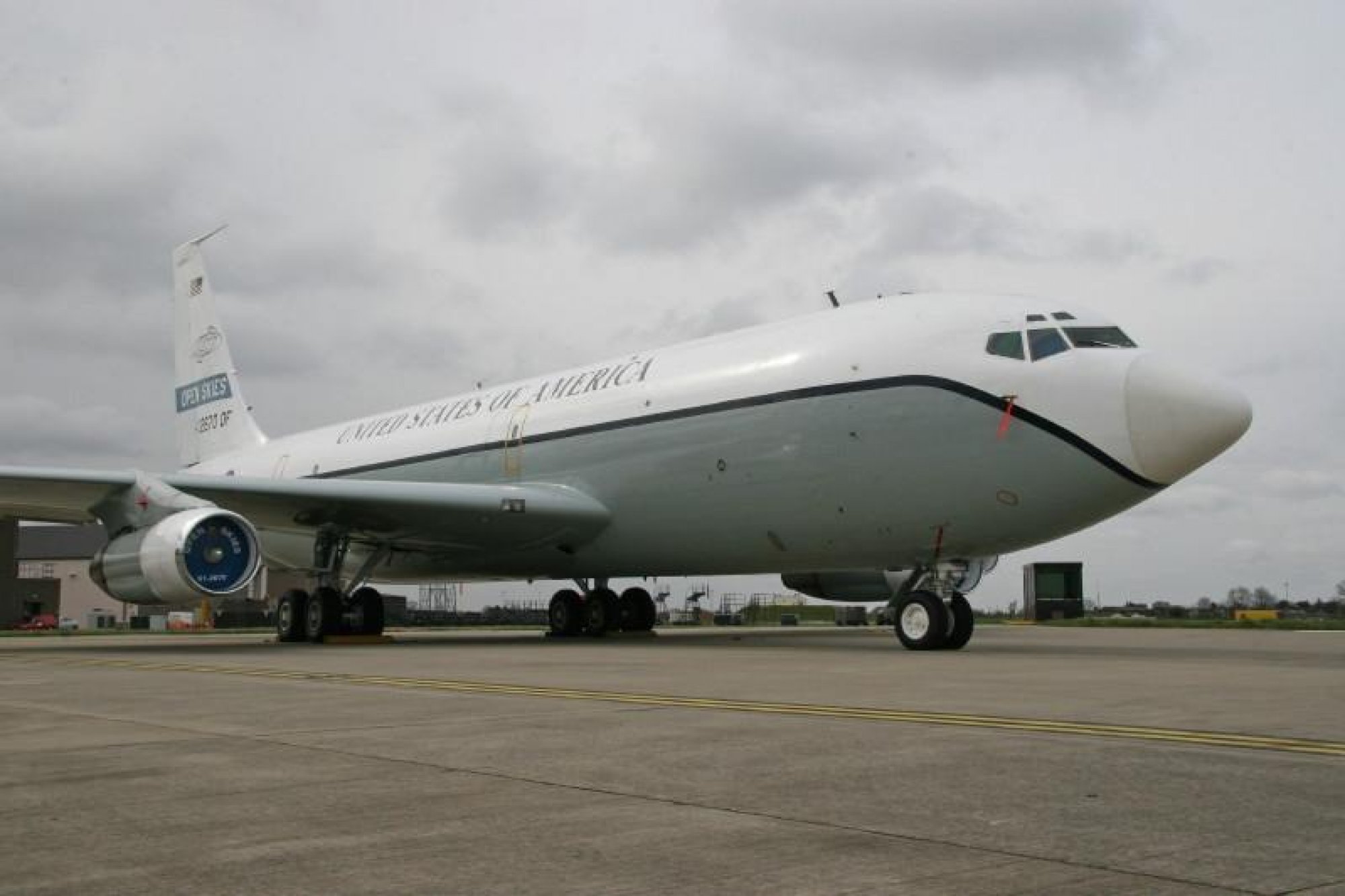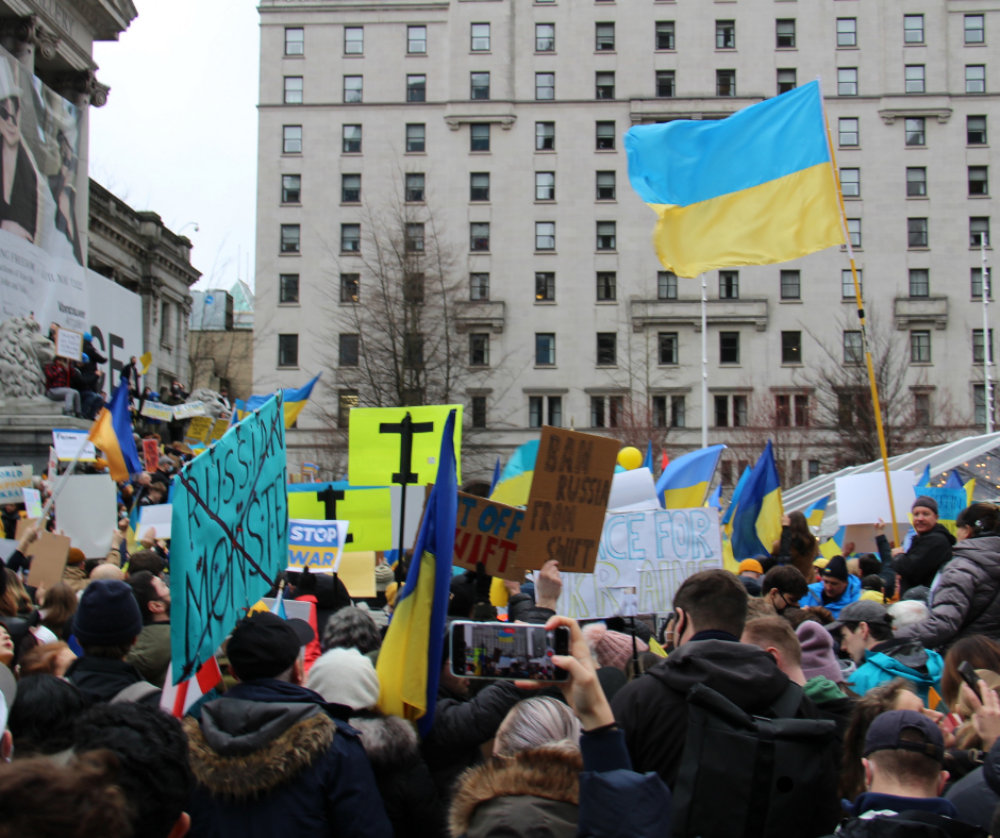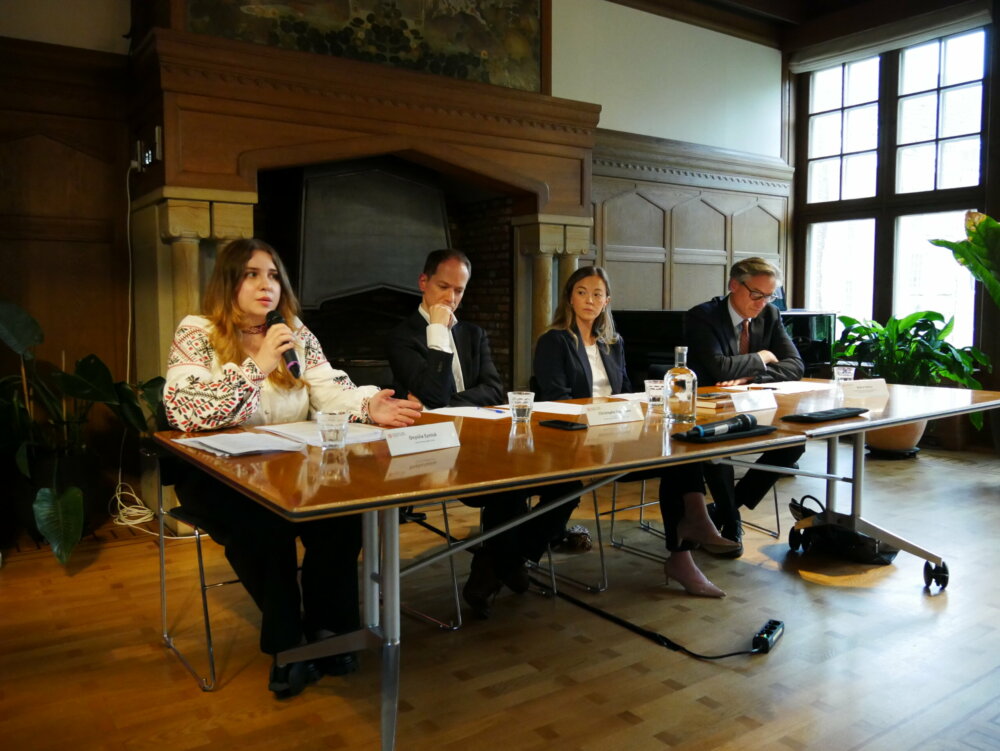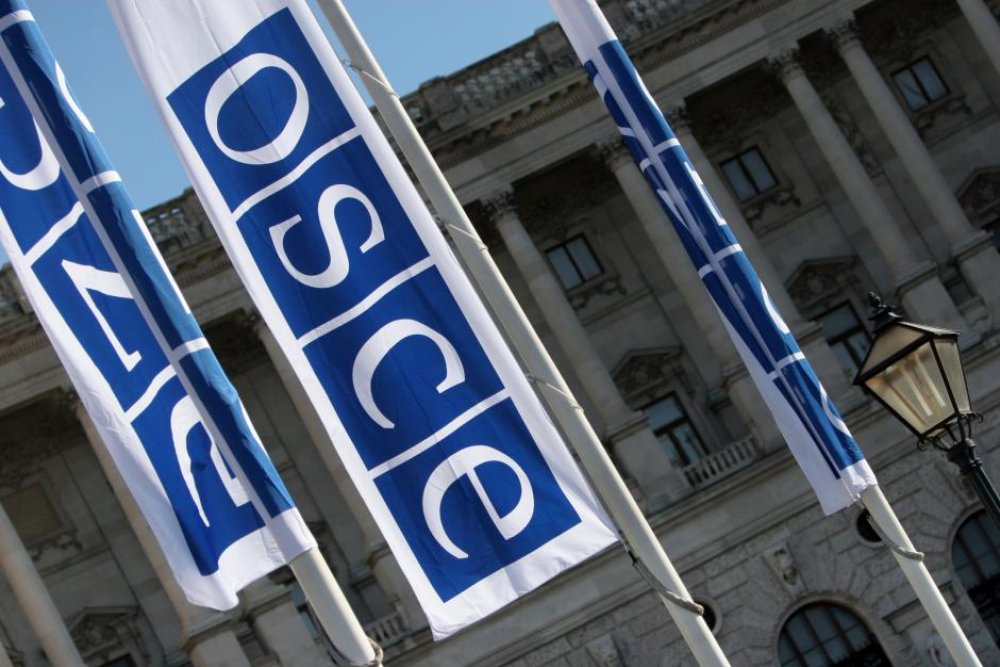OSCE/Kevin Wright

Future of the Open Skies Treaty to be decided at a conference in Vienna on 6 July
Last month U.S. President Donald Trump delivered another blow to the international arms control framework.
On 21 May, he declared that the U.S. would be leaving the Open Skies Treaty (OST), a three-decades-old agreement that allows mutual reconnaissance flights over the territories of the 34 states parties. The Treaty was signed within the framework of the Conference on Security and Cooperation in Europe (CSCE) in 1992 and entered into force in 2002.
It allows unarmed surveillance flights, equipped with agreed and certified censors, over the territories of state parties with a 72-hour notice.
Its main purpose is to provide states with the possibility to monitor military activities that take place on the territory of state parties and thereby increase transparency and build trust. The unarmed reconnaissance flights are meant to provide reliable information that neither side is preparing for war or for a surprise attack. So far, more than 1500 overflights have been conducted under the Treaty.
“Russia didn’t adhere to the Treaty, so until they adhere, we will pull out,” Trump told reporters on 21 May.
The U.S. will exit the Treaty in six months, leaving open a backdoor that allows Washington to reconsider its decision should the Trump Administration feel convinced that Russia is willing to return to full compliance. But that seems unlikely.
Deciding the future of the Treaty
A first decision about the future of the Treaty will be taken at a conference of the state parties that will be convened by the co-depositories Canada and Hungary on 6 July at the OSCE headquarters in Vienna. This will also lay the ground for the Review Conference that is planned for October. While preparations for the conference are in full swing, diplomatic efforts are ongoing in parallel to solve the issue of Russian treaty violations and to keep the U.S. in the treaty, diplomats familiar with the discussions told SHR Monitor.
One issue that will have to be discussed is related to aircraft capacity.
“This year the issue of aircraft capacity could become a challenge, because the U.S. has already ceased all its planned flights, some of which are joint missions with European partners,” Alexander Graef, researcher at the Institute for Peace Research and Security Policy at the University of Hamburg, told SHR Monitor. “But in the long-term the topic should become less of a problem, particularly when the new German Open Skies aircraft becomes available next year,” Graef said.
Meanwhile no other state has voiced an interest in withdrawing and there is hope that the remaining parties will officially decide the continuation of the treaty at their upcoming conference, even without U.S. participation.
“As for our possible actions, we are assessing all possible options,” Russian Deputy Foreign Minister Alexander Grushko was quoted by Russian news agency TASS on 6 June. “Let’s see what the conference brings. We have no intention to pull the chestnuts out of the fire for anyone,” Grushko said.
One important aspect in this context would be to address Moscow’s concern about European NATO members and Canada possibly sharing Open Skies images from Russia with Washington, even after U.S. withdrawal.
“In order to provide additional assurances to Russia, European member states and Canada could issue a public statement at the conference of the state parties in July, pledging that Open Skies imagery will not be shared with non-member states,” says Alexander Graef.
Apart from Russia, the foreign ministers of eleven OST member states also issued a statement in which they regretted the U.S. withdrawal from the Treaty.
“The Open Skies Treaty is first and foremost a treaty about European security. NATO allies support the treaty and do not want to see the U.S. withdraw. This will be seen in Europe as another instance in which the Trump administration pays little attention to European views,” Steven Pifer, a senior fellow at Brookings Institution, told SHR Monitor.
Yet, he also adds that the Open Skies Treaty can still contribute to transparency and confidence-building in Europe, if other states remain in it. “U.S. withdrawal would be a major blow to the treaty, but it does not have to be a fatal blow,” Pifer said.
The faltering arms control regime
Continuing the implementation of the OST is considered important since the treaty currently constitutes the last remaining element of a set of agreements that helped to reduce tensions and conflict in Europe since the end of the Cold War.
Other key agreements have recently been undermined. Russia suspended its participation in the Treaty on Conventional Armed Forces in Europe (CFE Treaty) in 2007 after other state parties linked the ratification of the Adapted CFE Treaty to Russian troop withdrawal from Moldova and Georgia. Furthermore, the 2011 Vienna Document on Confidence- and Security-Building Measures has not been modernized and updated in many years because of Russian resistance to such efforts.
The U.S. decision to walk out of the OST should also be seen against the background of a faltering nuclear arms control regime. Washington withdrew from the Intermediate-range Nuclear Forces (INF) Treaty in August 2019, and maintains that the New START Treaty should only be extended if China participates, despite recent negotiations between the US and Russia in Vienna.
Tool for transparency and trust building
The OST has many advantages but most experts agree that its main added value is its potential for increasing transparency and trust.
One other benefit is the fact that the joint overflights help create crucial military-to-military contacts between officers from different countries, who conduct Open Skies flights together. Communication between the military is considered essential in avoiding military misunderstandings and miscalculations.
Furthermore, images taken during flights provide a commonly accepted pool of data that can be shared with all parties to the treaty. The information gained can thus be used as a basis for discussion, for example within the Open Skies Consultative Commission (OSCC), the treaty’s implementing body, which meets on a monthly basis under the umbrella of the OSCE in Vienna. This is also the place where misunderstandings can be resolved.
“Open Skies provides unclassified imagery that can readily be used and that allows U.S. allies to actively participate rather than just receive U.S. intelligence,” Pifer told SHR Monitor.
Russian Treaty violations
Nevertheless, the U.S. decided to withdraw from the treaty arguing that “Russia has flagrantly and continuously violated the Treaty in various ways for years”.
Indeed, Moscow limited Open Skies flights over the Russian exclave of Kaliningrad, imposing a flight length restriction of 500 km. Russia has also denied flights within a 10-km zone along its border with the Russian-occupied Georgian regions of Abkhazia and South Ossetia. Moscow considers them as independent states and therefore argues that they are not a party to the Treaty. Russia in the past also prohibited flights over certain Russian military exercises.
“The criticisms of the treaty do not stand up to scrutiny. Russia is violating some of the terms, but the U.S. has retaliated with reciprocal measures, such as denying Russian overflights over Hawaii,” Pifer told the SHR Monitor.
In order to solve these issues, European states and Canada have often called for open debate and dialogue within the OSCC.
European diplomats in Vienna confirmed to SHR Monitor that Russian treaty violations have been addressed within the framework of the OSCC in the past, and that they had hopes that U.S.-Russian disagreements could be solved there eventually. While such efforts are ongoing, hopes for a concrete solution are fading.



Comments
* Your email address will not be published